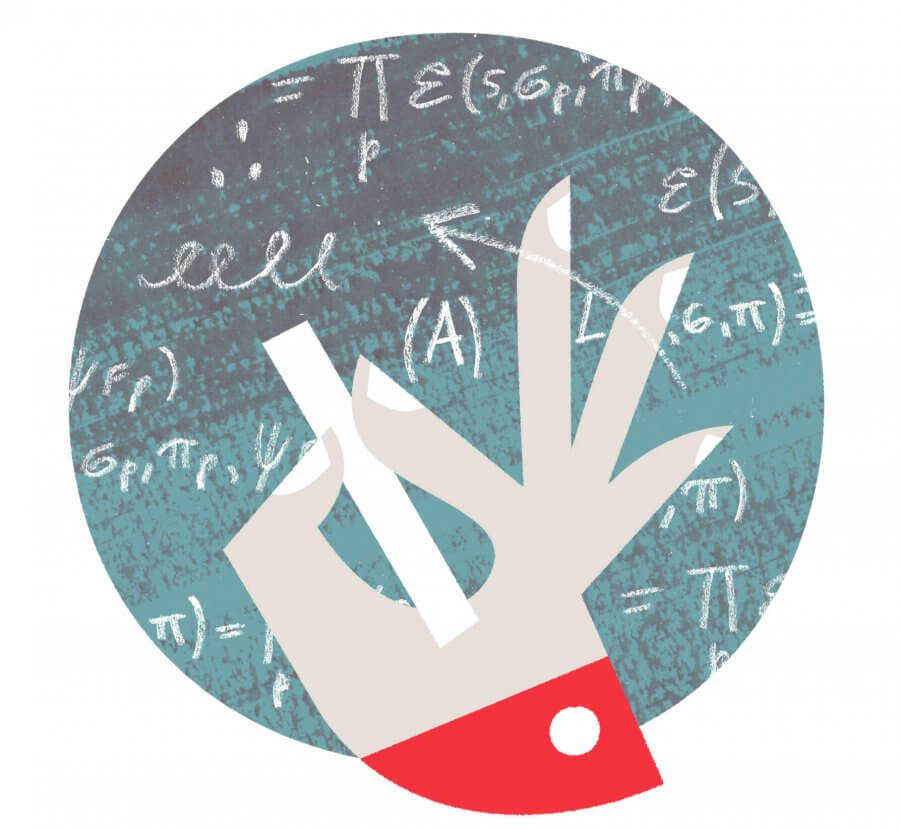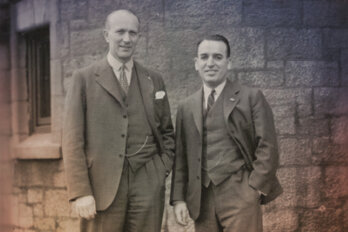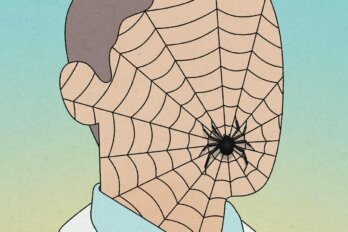In 1967, a stack of handwritten notes landed on the desk of André Weil, a renowned French mathematician teaching at the Institute for Advanced Study in Princeton. The sheets of paper were slightly crumpled, words scratched in the rounded style of someone used to weaving together letters and calculations. On top was a cover letter: “If you are willing to read it as pure speculation, I would appreciate that; if not—I am sure you have a waste basket handy.”
The note was written by Robert Langlands, a Canadian in his early thirties. His mathematical scribblings—which were not tossed into the garbage can but instead circulated by Weil to prominent scholars—were the basis for Langlands’s now-famous paper, published a couple of years later, entitled “Problems in the Theory of Automorphic Forms.” The set of hypotheses within it has guided the evolution of math ever since.
Like science, math is split into different branches of study that, more often than not, live independently of each other. As our understanding of each has evolved, the challenge for researchers has been to build bridges between them. Without uniformity—without a mathematical theory that appreciates both the oscillations of a violin string (like harmonic analysis) and the encryption scheme of a computer (like number theory)—mathematicians are working on completely separate planes. Few thought there would ever be a universal rule book. That is, until Langlands found a connection between two seemingly unrelated topics.
His conjectures, called “functoriality” and “reciprocity,” established striking similarities between number theory and automorphic representations. The former is a kind of pure math that studies only integers: positive or negative whole numbers like 1 or -544. The latter is part of harmonic analysis, which interprets functions or rates of change as waves. The striking correlation between these two separate areas of study, as noted by Langlands, suggests that there may be a grand unifying theory of mathematics after all.
At times, Langlands has called his discovery a “miracle”; other times, he has referred to it as a fluke. He worked with patterns that no one else had ever even noticed, but despite winning prestigious awards, he often seems modest about taking credit for his work. And though he acknowledges his Canadian heritage—when he’s not working from Albert Einstein’s old office at the Institute for Advanced Study, he spends his time in Montreal—he’s not exceptionally patriotic. “For Canadians in particular,” he told a graduating class of mathematicians in 1993, “this is an opportunity to escape from our endemic sense of mediocrity.”
Langlands has, in the past, spoken of his research as practically useless, irrelevant in the “real world.” The mathematician considers his work to be closer to art—his lectures on pure math bear the motto “beautiful lofty things”—and art, he says, is often futile. Yet his paper has profound implications. His theories helped to solve Fermat’s last theorem, a 400-year-old puzzle that once held the record for the world’s most difficult mathematical problem. They are also thought to be the key to proving the Riemann hypothesis, one of the most significant unanswered questions of modern mathematics.
Perhaps the most exciting application of Langlands’s theory is in the world of quantum physics. In the same way that his conjectures linked number theory and automorphic forms, they could help physicists connect the forces of electricity and magnetism. Finding a unified theory for physics would mean finally bridging Einstein’s theory of relativity with quantum mechanics, bringing us closer to a comprehensive understanding of the universe. Today, Langlands’s ideas have been collected into the “Langlands Program,” a vast area of research that deals with unification. The notion of using Langlands’s theories to bind together nature’s fundamental forces landed a multi-million-dollar grant from the US Defense Advanced Research Projects Agency nearly ten years ago, and since then, mathematicians and physicists have been working together in their research.
Langlands himself just turned eighty years old, and he’s still a professor emeritus at the Institute for Advanced Study. Ever the forlorn artist, he continues to doubt that his work will be of much use to scientists; to him, pure math will always be an enjoyable pastime for the few who understand it. But his decades-old paper accentuates the famous words of Galileo, the sixteenth-century astronomer who revolutionized scientific study: “The laws of nature are written in the language of mathematics.”
This article appeared in The Story of Canada in 150 Objects, under the headline “Problems in the Theory of Automorphic Forms,” in January 2017.





